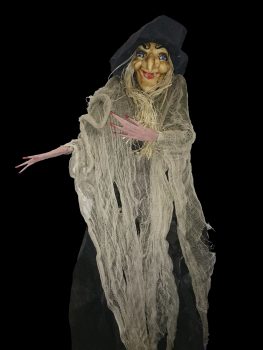La Befana – The legend of the Epiphany Posted by Bridgette on Jan 3, 2020 in Culture, Italian Language
Ciao a tutti!
Buon anno nuovo! Oggi discutiamo l’Epifania in Italia, che è il 6 gennaio. L’Epifania è una festa cristiana che festeggia la rivelazione di Gesù Cristo come Dio incarnato. In Italia, per celebrare l’Epifania, c’è una leggenda che riguarda una strega chiamata “Befana”. La Befana è una anziana che cavalca una scopa. La notte dell’Epifania visita tutti i bambini italiani con dei dolci o dei regali per i bambini beneducati (buoni), o del carbone per i bambini maleducati (cattivi), lasciando i suoi doni in delle calze. È una leggenda simile a quella di Babbo Natale. Inoltre, lei spazza il pavimento per rappresentare il liberarsi dai problemi dell’anno precedente. La famiglia può lasciare un bicchiere di vino e del cibo locale per la Befana.
Happy New Year! Today we are going to discuss the Epiphany in Italy, which is January 6th. The Epiphany is a Christian celebration that celebrates the revelation of Jesus Christ as God incarnate. To celebrate the Epiphany in Italy, there is a legend about a hag named the “Befana.” The Befana is an old woman who rides a broom. The night of the Epiphany she visits all the Italian children with sweets or presents for the good children, or coal for the naughty children, leaving her gifts in socks. It is a legend similar to that of Santa Claus. She also sweeps the floor to represent the sweeping away of the problems of the year before. Families can leave a glass of wine or some local foods for the Befana.
Secondo la leggenda cristiana, la Befana era una casalinga e i Re Magi le hanno fatto visita per chiedere dov’era il figlio di Dio. La Befana non conosceva dov’era Gesù Cristo, ma aprì loro casa sua. La notte dopo ha provato a trovare i Re Magi e Gesù Cristo, senza però riuscirci. Per questa ragione lei continua a cercarli ancora oggi, e visita i bambini dappertutto.
According to the Christian legend, the Befana was a housewife, and the Three Wise Men visited her to ask her where was the son of God. The Befana did not know where Jesus Christ was, but she opened her home to the men. The night after she tried to find the Three Wise men and Jesus Christ, but she did not succeed. For this reason, she continues to search for them until this day, and visits children everywhere.
Some more info about the Befana…
- La Befana Fascista (o Befana del Duce): During the Fascist period from 1922-45, Benito Mussolini replaced the Befana as the provider of gifts and candy to little ones, as a propaganda stunt.
- Uno stratagemma usato dai genitori per non farsi scoprire dai bambini è quello di “minacciarli” (la befana ti dà la scopa in testa). A strategy used by parents so as to not be discovered by the children is through intimidating them (the Befana will hit you over the head with her broom).
- C’è una canzone popolare sulla Befana, la cui strofa più conosciuta recita: There is a popular song about the Befana, the most well known verse goes like this:
«La Befana vien di notte
con le scarpe tutte rotte
con le toppe alla sottana
viva viva la Befana!»
- A Urbania c’è la Casa Ufficiale della Befana: In Urbania there is the Official House of the Befana: http://www.festadellabefana.com
Alla prossima!

Build vocabulary, practice pronunciation, and more with Transparent Language Online. Available anytime, anywhere, on any device.





Comments:
Alan:
Thank you for all the interesting stories, including the new vocabulary. I always look forward to your emails.
Rein Jonkman:
Ancora un’altra bella variante, la Befana!
In Olanda abbiamo le bambini credono in San Nicolas chi cavalca sui tetti e porta regali ai bambini carini. I bambini cattivi ottengono sale, non carbone. Una volta io ho preso il sale :-)!
Dusia:
Grazie , molto divertente!!!!